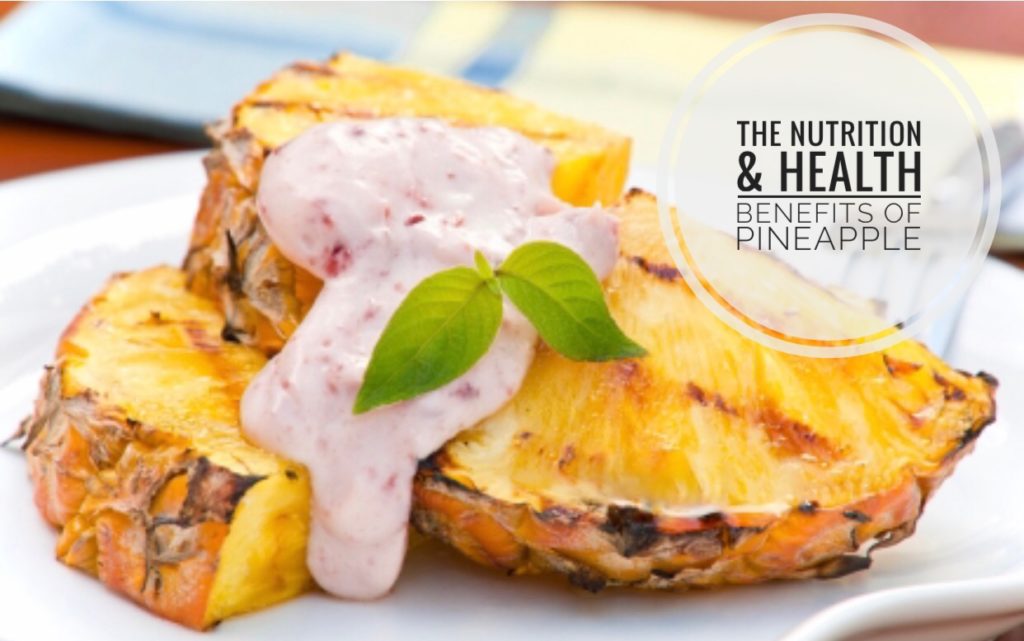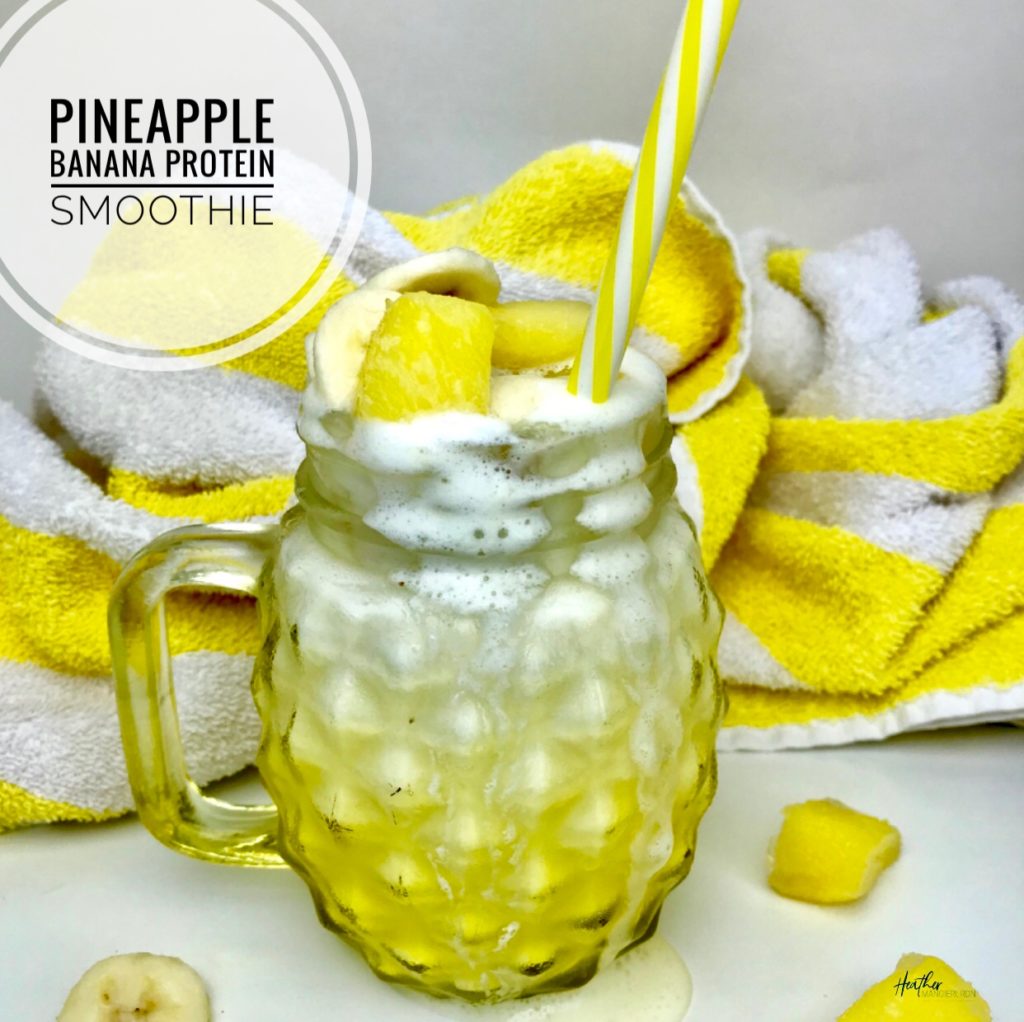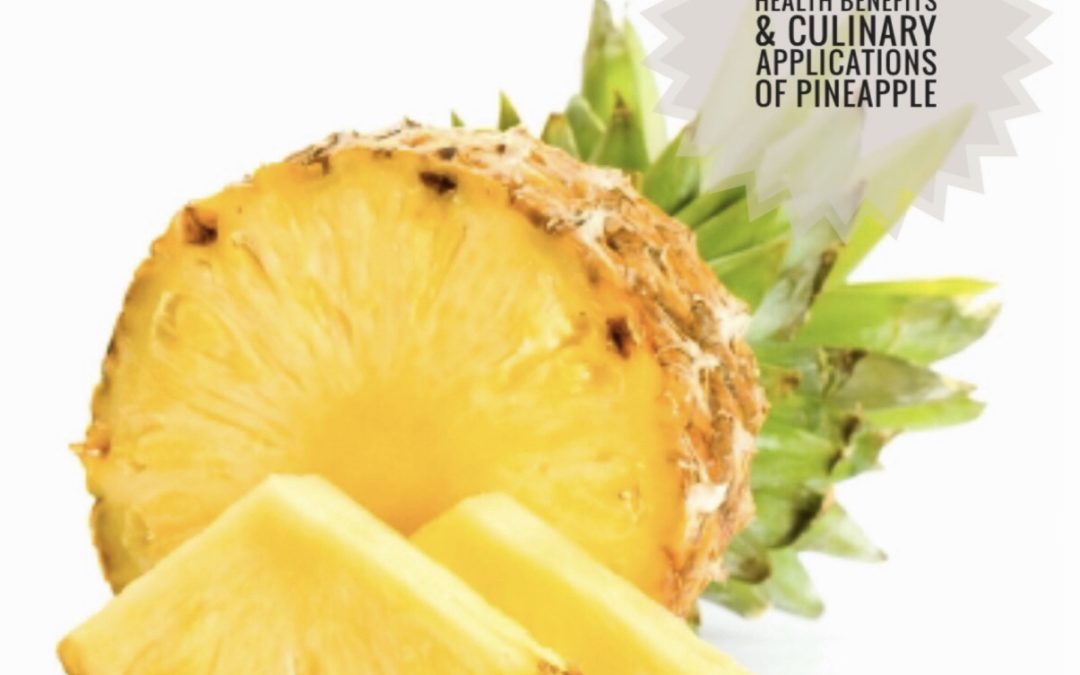
Let’s talk about pineapple. It’s an odd looking fruit. It’s name doesn’t have any connection to apples or pine, so it doesn’t make sense. Historically, it’s a symbol of hospitality. But, most importantly, it’s a sweet, tropical fruit with many health and culinary applications.
Nutrition and Health Benefits
Pineapple is like many other fruits in that it’s loaded with vitamin C. Vitamin C is a powerful antioxidant that works to protect and repair cells from free- radical damage. It also aids in wound healing and skin care, promotes healthy gums and even provides support to the immune system. And, just one cup of pineapple provides over 100% of the daily value for this nutrient.
Below are some other nutrition facts for 1 cup of pineapple:
1 Cup (Chunks) Provides:
-
- 82 Calories
- 2.3 grams Fiber
- > 100% DRI Vitamin C
Pineapple is also a source of bromelain. Bromelain is a general name for proteolytic enzymes obtained from the stem and fruit of the pineapple. It has been used for medicinal purposes for years. Such applications include:
- Reducing inflammation caused by infection or injury
- Reducing symptoms associated with sinusitis
- Relieving digestive problems
- Fighting bacterial and viral infections
- Reducing arthritis pain
While these are possible applications of the enzyme, it is important to note that there is no conclusive evidence as to its effectiveness. Also, while it is found in pineapple, the fruit does not contain high enough amounts to be used for medicinal purposes. Bromelain supplements can be purchased, but as with any supplement or medication, you should always do your homework and be sure to buy from a reputable compnay. And, be sure to check with your primary care physician before consuming.
Choosing, Storing, and Preparing Pineapple
Choose pineapples that are fragrant, feel heavy for their size, and have dark green leaves. Avoid fruits that have soft spots or leaves that appear dry. While you don’t want one that is past its prime, you also don’t want one that is unripe. Unripe pineapples are inedible and may cause severe throat irritation, vomiting, and diarrhea.
Pineapples are often purchased canned. While they retain their nutrients, it is important to use caution when choosing canned fruit, since calorie counts can vary greatly. The guidelines for canned peaches also apply to canned pineapple.
The easiest way to prepare fresh pineapple is to slice it iin half lengthwise, then use a pairing knife to cut the fruit into bite sized pieces. Make sure to keep the stem; it makes a great centerpiece for a fruit tray.
Pineapples can be left at room temperature for 1-2 days. They do not become sweeter once harvested, but they will soften and increase in juice content. If two days pass and you have still not eaten the fruit, store it in the refrigerator in a plastic bag. Once cut, it should be kept in the refrigerator. Unlike some fruits, pineapples do not freeze well, as the process creates an undesirable flavor.

Ways to Enjoy Pineapple:
- Cut it into chucks or rings, and enjoy!
- Grill or broil it – The heat will caramelize the natural sugars, enhancing its sweetness
- Dice it and add it to a sweet or spicy salsa. Pineapple pairs great with seafood
- Make a refreshing smoothie. Pineapple tastes sweeter than other fruits making it a great addition for green smoothies. Try this pineapple banana protein smoothie
- Make your own Hawaiian pizza. Top whole-wheat crust with tomato sauce, low-fat cheese, diced pineapple, and low-sodium ham
- In the mood to bake? Make a pineapple upside down cake. Try using half whole-wheat flour.
- Use pineapple juice in a marinade. It will add flavor and – thanks to the bromelain – help to tenderize the meat
- Add pineapple to low-fat yogurt or cottage cheese. Add it right before eating – The protein-digesting bromelain may affect the flavor and consistency if left on too long



 Hi, I’m Heather – a registered dietitian, busy mom, consultant, adventure junkie and travel addict who has mastered living healthy on the go. My blog is where I share simple recipes and healthy living tips to help and inspire others to live their best life.
Hi, I’m Heather – a registered dietitian, busy mom, consultant, adventure junkie and travel addict who has mastered living healthy on the go. My blog is where I share simple recipes and healthy living tips to help and inspire others to live their best life.
Pineapple has been known as a symbol of hospitality for many years. This tropical fruit has become well known around the world and has also introduced its health wonders.www.livebetter-m.com
This article is great and helpful, visit our website to get more information about pineapple http://ners.unair.ac.id/site/index.php/news-fkp-unair/30-lihat/1312-nanas-buah-tropis-kaya-manfaat